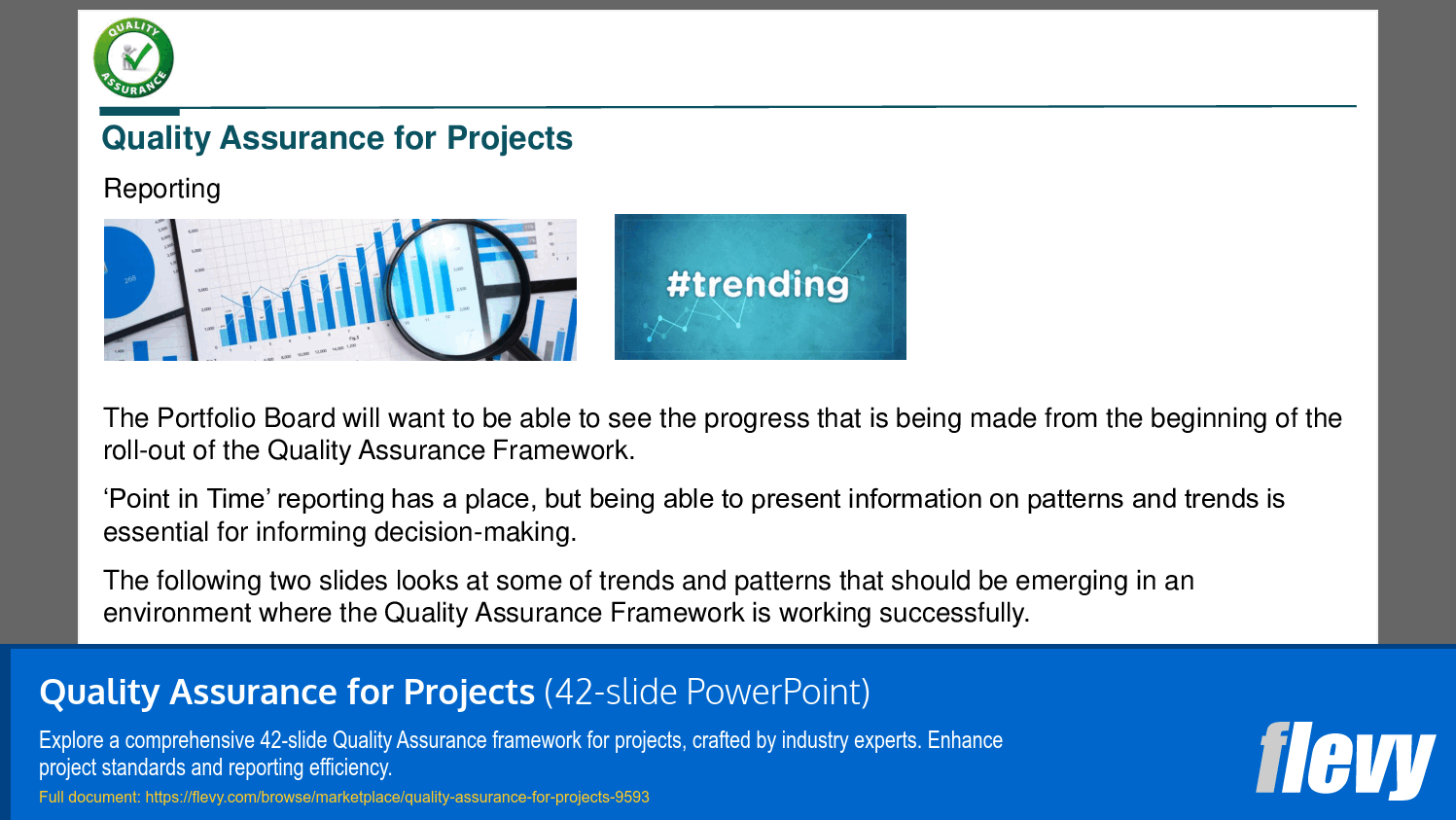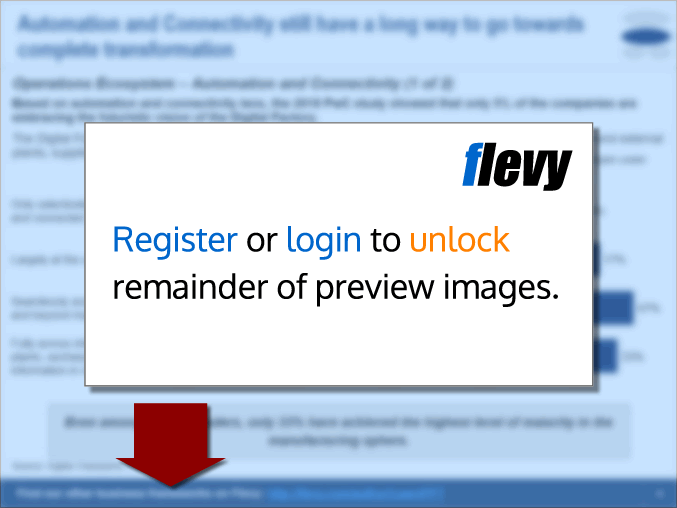Quality Assurance for Projects (PowerPoint PPTX Slide Deck)
PowerPoint (PPTX) 42 Slides
BENEFITS OF THIS POWERPOINT DOCUMENT
- Provides a basis upon which to roll-out a Quality Assurance Framework
- Introduces the concept of 'what does good look like?'
- Acts as support for other frameworks and policies aimed at improving the success rate of projects.
QUALITY MANAGEMENT PPT DESCRIPTION
A 42-slide pack that looks into the process of defining and applying a Quality Assurance Frame for Projects.
The document covers creating the framework (the scope, the required standards, the scoring mechanism, tailoring the approach, etc.).
Contains both illustrations and examples of how to created quality standards for each of the typical artefacts that a project produces (e.g. the Business Case, the Risk Register, the Issue Log, the Project Schedule, the Change Log, the Project Status Report, the Project Exception Report, the Project Closure Report, the RACI Chart, the PID, and the Project Board Minutes).
Sections include: Roles & Responsibilities (who are the key players in the process and how to they contribute), Reporting (the important of reporting not just within individual projects, but also at the organizational level where other projects and programmes could be impacted), Education (this document emphasizes the huge importance of this, specifically the need to avoid an 'Us versus Them' situation between those being assessed (the Project Management Group) and those conducting the assessments (the Assessment Team)).
Completely configurable to the needs of any organisation.
Got a question about the product? Email us at support@flevy.com or ask the author directly by using the "Ask the Author a Question" form. If you cannot view the preview above this document description, go here to view the large preview instead.
Source: Best Practices in Quality Management PowerPoint Slides: Quality Assurance for Projects PowerPoint (PPTX) Presentation Slide Deck, Dartview Consulting









